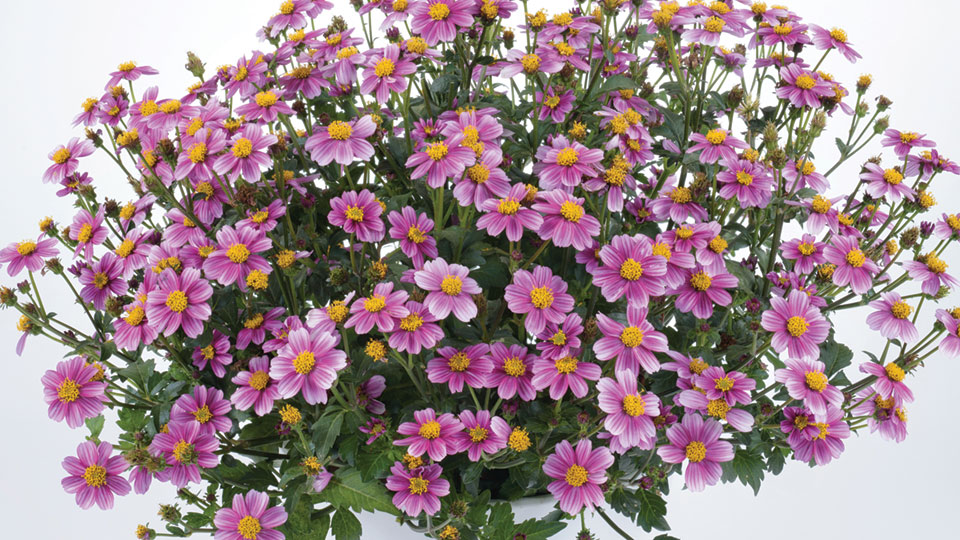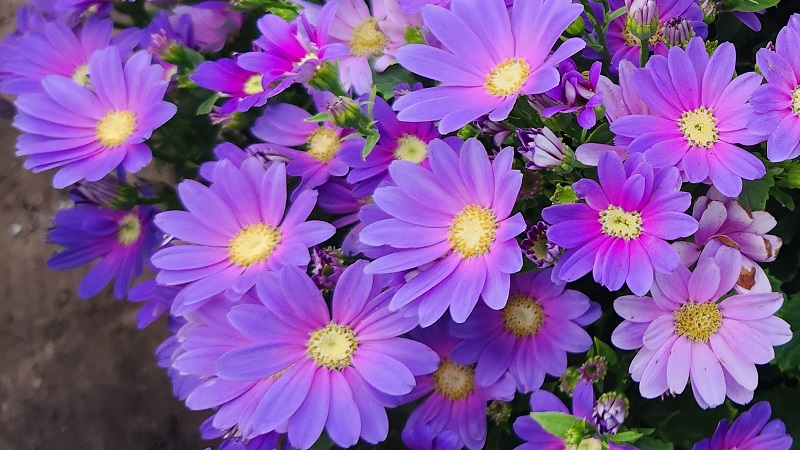Growing Tips for Bidens From a Plant Expert

Bidens ‘Pretty in Pink’
With bidens breeding and its development increasing exponentially in recent years, we’re seeing great advancements in the field. Along with that, I think we’ll see the crop become a major player in the market, beyond the niche crop it is now. New colors, forms, and habits are all contributing factors to the increasing popularity of this high-potential plant.
Even with the ramp up in breeding, producing bidens still takes attention to detail and a focus on quality. Here are a few of the tips we’ve developed over the years for perfecting and breeding bidens. (Visit the Danziger website to see bidens breeding.)
Production Recommendations For Growing Bidens Successfully
Rooting: Bidens varieties are easy to root. They typically take off within 10 to 14 days at temperatures of 64°F to 75°F (18°C to 24°C). Consider a preventative drench with a fungicide such as Daconil after sticking trays.
Planting: For 4-inch pots, use one plant per pot. Plants will be ready for sales (from rooted cuttings) within six to eight weeks. For 6-inch (15 cm) pots, use one to two plants per pot, and they’ll be ready in about eight to 10 weeks. If you’re producing 10-inch (25 cm) hanging baskets, use three to four plants, and the baskets will be ready in 10 to 12 weeks.
Pinching: Bidens benefits from one soft pinch during planting, in about week three after sticking the liner.
Light Intensity: Bidens prefers full sunlight. Provide a minimum of 6,000 footcandles (60,000 LUX) of light.
Temperatures: Keep greenhouses relatively warm when growing bidens. Maintain daytime temperatures at 64°F to 75°F (18°C to 24°C) and keep nighttime temperatures at 55°F to 65°F (13°C to 18°C).
Fertilizer: Provide a constant feed with a balanced fertilizer, at levels of 200 to 250 ppm nitrogen, containing average micronutrient levels.
Irrigation: Bidens benefits from constant moderate moisture. Excessive dryness can cause petal drop.
Growing Media: Choose a well-drained, disease-free potting mix. Maintain pH at 5.5 to 6.3 and electrical conductivity (EC) at 0.6 to 0.9.
Growth Regulators: Plant growth regulators (PGRs) can be considered optional for bidens. They are not necessary under high light intensities. If you decide to do a PGR application, consider one to three sprays of Alar (B-Nine) at approximately 2 gram/Liter according to required plant size. Always read and follow label instructions.
Pests and Diseases: An integrated program is essential to successful pest and disease management. Start with a standard preventive program. Throughout production, continue with a vigilant scouting and monitoring program to prevent any insect and disease activity. Maintain moderate humidity levels and good air circulation as a preventative. In particular, scout and monitor for insects, including whiteflies, aphids, and thrips, and plan for preventative sprays. Diseases to watch for include botrytis and pythium. Drench with broad-spectrum fungicides as a preventative measure.
USDA Hardiness: Most bidens are hardy only in Zones 9 to 11, making them an annual in the majority of North America.








